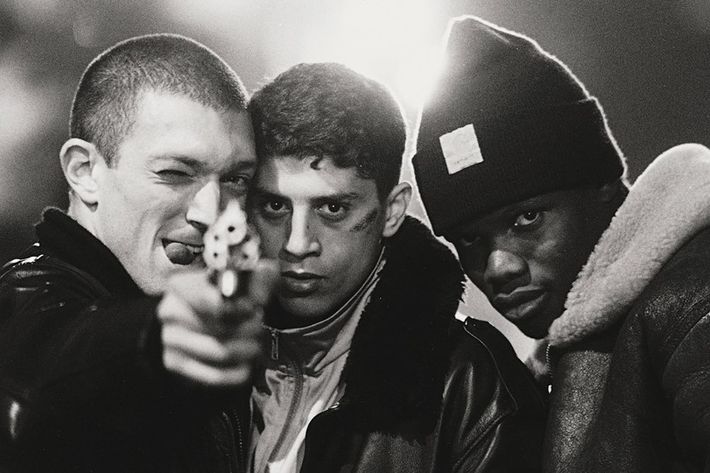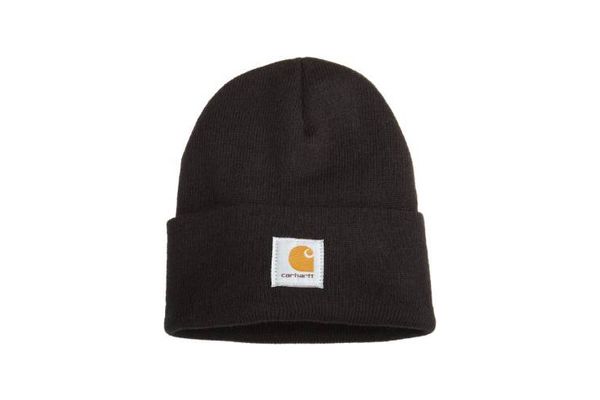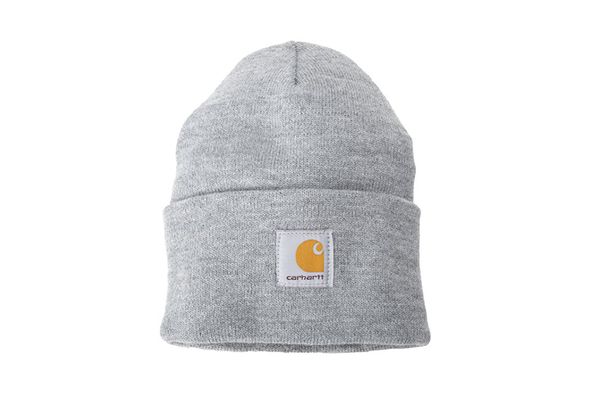
“The Carhartt beanie has become a millennial basic.”
That’s what Marian Park, an editor and trend specialist at WGSN, emailed me about the 31-year-old workwear classic that’s reached peak beanie ubiquity this winter. It’s tagged in 7,612 Instagrams. It’s on skaters in downtown Manhattan. It’s been photographed on Rihanna. It’s tied (with a pocket tee) for a spot as the brand’s top-selling item. In New York, it’s inescapable.
But how did we get here? Carhartt was a workwear company founded in 1889 in Michigan for railroad workers and blue-collar manual laborers. It’s rise to the city streets and street-style cool seems like an unlikely turn. So how has something with such a rugged and utilitarian history — a brand beloved in Alaska and worn by Sarah Palin — become as popular among the same people you might otherwise find in color-blocked leggings and carrying an Outdoor Voices tote?

The answer is a mixed bag of fashion coincidences, but it begins with Carharrt’s own evolution. The beanie was first released in 1987. Soon after, in the early ’90s, the all-American line took off amongst rappers, and the Swiss jeans designer Edwin Feah began importing the clothes to Europe guessing that he was getting in early on the next big thing. Almost instantly they became popular amongst skaters (similar to Eastpak backpacks). It was such a big hit abroad, and in a crowd so different than construction workers, that by 1994 Feah formalized a relationship with the brand, developing his own line called Carhartt Work In Progress for which he tailored existing Carhartt clothes to better fit skaters needs and preferred silhouettes, while still keeping that signature high quality duck canvas. The beanie mostly remained the same, although even today the WIP version uses slightly different threads and materials.

WIP has been in Europe since ’94 (and the beanies have been a staple for at least the last ten years there), but thanks to an agreement with the original Carhartt, WIP only entered the U.S. market in 2011 with a store in Soho. It was around that time that A.P.C. collaborated with WIP on a few pieces, including a beanie, that instantly elevated the brand to fashion relevancy. A year later, Rihanna was photographed in a neon-yellow one, a signature color from the original Carhartt.

Then things really started to spike about three years ago, says Tony Ambroza, Carhartt’s chief brand officer, when skate culture began its march into the mainstream. WIP, with its historical European skater associations, moved on up with it. As streetwear made its way to the runway, the brands that have operated around it got a second wind, too. But it wasn’t just skater culture. Workwear also became influential in street fashion, where it’s worn not “to look like a foreman from the gold rush, but in the neo-’90s way of hip-hop artists and skaters,” says Jian DeLeon editorial director at Highsnobiety. The confluence of skate and workwear made the chore coats, canvas Detroit jackets, and work pants that have been popular in street fashion just as common on runways and in limited-release collections. Deleon continues, “Remember that scene in Clueless when Cher talked about how guys at her school dress in baggy pants?” That’s back. And that’s also Carhartt. It’s skatewear becoming mainstream, as the ’90s return, and it’s a bit of leftover normcore, too, with a no-nonsense, practical but not flashy approach to dressing. I mean, what could you possibly wear with your rolled-up Dickies pants if not a Carhartt beanie?
It’s also authenticity, that overused buzzword, that’s shifting. As Deleon explains, “Authenticity is evolving into provenance. They both mean the same thing: Here is a company with a proven track record of reliable good products with an enduring appeal.” Carhartt delivers on the promise.
And, after all of that, once people realize that they want provenance and Carhartt, it’s the beanie people buy because it’s cheap. You can find Carhartt beanies anywhere from an Army and Navy warehouse to a boutique store — a rare case of retail ubiquity that all but ensures its place in the Zeitgeist — and still it’ll always be just $10. Always something all the kids can buy, even when they can’t afford new jackets from the Carhartt and Junya Watanabe collaboration that show off the very same sewn-on logo that sits right at the center of the cap.
Now, you might think that we’ve reached peak beanie, as we did when we started writing this piece, but the trend forecasters would politely disagree: Although it feels like they’re everywhere now, Park from WGSN thinks it’s still yet to top off. She’s anticipating a mass-market explosion come 2019.
The Strategist is designed to surface the most useful, expert recommendations for things to buy across the vast e-commerce landscape. Some of our latest conquests include the best women’s jeans, rolling luggage, pillows for side sleepers, ultra-flattering pants, and bath towels. We update links when possible, but note that deals can expire and all prices are subject to change.
Every editorial product is independently selected. If you buy something through our links, New York may earn an affiliate commission.




















